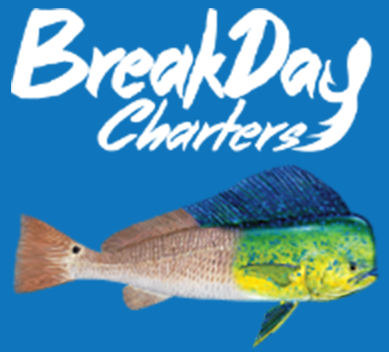Prime Flounder Habitat in Beaufort Waters
Beaufort, North Carolina offers some of the East Coast's most productive flounder fishing opportunities, with its extensive network of channels, flats, and structure providing ideal habitat for these bottom-dwelling predators. The area's complex system of inlets, creeks, and sounds creates diverse environments where flounder thrive throughout the year. Understanding their preferred habitat and effective bottom fishing techniques significantly improves success rates when targeting these prized table fare fish.
Flounder are ambush predators that rely on camouflage and positioning to capture prey. They prefer areas with sandy or muddy bottoms near structure, current breaks, and transitions between different bottom types. The waters around Beaufort feature ideal flounder habitat, from shallow flats where they feed during high tide to deeper channels where they stage during tidal changes. Professional charter captains understand how to locate and effectively fish these productive areas.
Understanding Flounder Behavior and Feeding Patterns
Successful flounder fishing begins with understanding their unique feeding behavior and habitat preferences. These flatfish position themselves in sandy or muddy areas where they can bury themselves and ambush passing prey. They particularly favor areas where moving water creates feeding opportunities, such as channel edges, inlet mouths, and areas around structure where current flow concentrates baitfish.
Tidal movement plays a crucial role in flounder activity and positioning. During moving tides, flounder become more active and position themselves in areas where current brings food to them. They often move onto shallow flats during high tide to feed, then retreat to deeper channels as water levels drop. Inshore fishing charters targeting flounder time their trips around optimal tidal conditions to maximize success.
Effective Bottom Fishing Techniques
Bottom bouncing represents the most effective technique for consistently catching flounder in Beaufort waters. This method involves using weighted rigs that maintain contact with the bottom while allowing bait to move naturally with the current. The key lies in maintaining proper bottom contact while avoiding getting stuck in structure or debris.
Rig selection becomes crucial for successful flounder fishing. Carolina rigs, drop-shot rigs, and bucktail jigs with trailers all prove effective under different conditions. The weight of the rig must match current strength and depth to maintain proper bottom contact. Experienced guides understand how to adjust tackle and techniques based on specific fishing locations and conditions.
Seasonal Patterns and Prime Locations
Flounder fishing in Beaufort follows predictable seasonal patterns that experienced anglers learn to exploit. Spring brings excellent fishing as flounder become active after winter and begin feeding heavily. Water temperature plays a crucial role in fish activity, with optimal fishing occurring when temperatures reach the mid-60s and continue rising through spring and early summer.
Summer flounder fishing can be exceptional, particularly during early morning and evening periods when fish move into shallower feeding areas. The abundance of baitfish during summer months keeps flounder well-fed and active. Summer fishing trips often combine flounder fishing with other species, providing diverse angling opportunities throughout the day.
Productive Fishing Locations
The waters around Beaufort offer numerous productive flounder fishing locations. Inlet mouths provide excellent fishing as moving water concentrates baitfish and creates feeding opportunities. Channel edges, particularly those with adjacent flats, hold feeding flounder throughout tidal cycles. Bridge pilings, dock structures, and oyster bars create ambush points where flounder wait for passing prey.
Bait Selection and Presentation
Live bait proves highly effective for flounder fishing, with mud minnows, finger mullet, and shrimp ranking among the top choices. The key to successful bait presentation lies in keeping offerings near the bottom while allowing natural movement that attracts predatory flounder. Proper hook placement ensures good bait action while maintaining high hook-up ratios.
Artificial lures also produce excellent results when properly presented. Soft plastic baits, bucktail jigs, and swimbaits that imitate natural prey can trigger strikes from aggressive flounder. The key lies in maintaining bottom contact while imparting action that mimics injured or fleeing baitfish. Color selection often depends on water clarity and light conditions.
Equipment and Tackle Considerations
Flounder fishing requires specialized tackle capable of detecting subtle bites while maintaining bottom contact in current. Medium to medium-light spinning gear provides the sensitivity needed to detect light bites while maintaining sufficient backbone to handle good-sized fish. Quality reels with smooth drags help prevent break-offs during the initial run of hooked fish.
Rod selection plays a crucial role in flounder fishing success. Rods with sensitive tips allow anglers to detect light bites while maintaining enough backbone to set hooks effectively. The ability to feel bottom structure and subtle changes in weight often determines success when fishing for these cautious feeders.
Advanced Techniques and Strategies
Experienced flounder fishermen employ advanced techniques to maximize their success. Drift fishing allows anglers to cover extensive areas while maintaining proper bait presentation. The key lies in controlling drift speed and maintaining optimal bottom contact throughout the drift. Professional charter operations use GPS and electronics to maintain productive drift patterns over known flounder habitat.
Understanding how weather and tidal conditions affect flounder behavior helps anglers adapt their strategies accordingly. Wind direction, barometric pressure, and tidal strength all influence fish positioning and feeding activity. Successful flounder fishing often requires adjusting techniques based on these changing conditions.
Planning Your Flounder Fishing Adventure
Flounder fishing success depends heavily on understanding tidal patterns, seasonal timing, and optimal conditions. Half-day trips often provide sufficient time to target flounder effectively while allowing flexibility for other fishing opportunities. Early morning and late afternoon typically produce the most consistent action as fish become more active during lower light periods.
Ready to experience productive flounder fishing in Beaufort's prime waters? Contact Breakday Charters at (252) 732-0990 to book your bottom fishing adventure. Our experienced guides know the most productive locations, techniques, and timing that consistently produce quality flounder catches in the diverse waters surrounding North Carolina's Crystal Coast.
